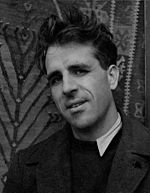No subscription or hidden extras
Read through all quotes from Mervyn Peake
In December 1939 he was commissioned by Chatto & Windus to illustrate a children's book Ride a Cock Horse and Other Nursery Rhymes publiMervyn Peaked for the Christmas market in 1940. He completed his formal education at Croydon School of Art in the autumn of 1929 and then at the Royal Academy Schools from December 1929 to 1933 where he first painted in oils. Peake placed much hope in his play The Wit To Woo which was finally staged in London's West End in 1957 but it was a critical and commercial failure.
He is best known for what are usually referred to as the Gormenghast books. The three works were part of what Peake conceived as a lengthy cycle the completion of which was prevented by his death and consequently should not be considered a trilogy.

